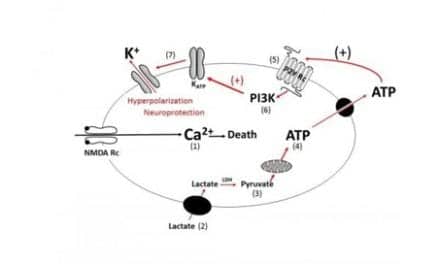There may be a link between increased physical activity before a stroke and improved outcomes afterward.
The improved stroke outcomes and smaller infarct size could be a result of the increased vascular endothelial growth factor (VEGF) in persons who participate in high levels of physical activity prior to experiencing the stroke.
Results of a study investigating this link were published recently in the Journal of Stroke and Cardiovascular Diseases.
“In the present study we have observed that a high level of self-reported physical activity prior to stroke was associated with greater VEGF expression in the first days after ischemic stroke. Likewise, this increment in VEGF levels was independently associated with a reduction in final infarct volume and with improvement of functional outcome at 3 months,” according to first author Elena Lopez-Cancio, MD, PhD, of the Universidad Autónoma Barcelona (UAB) (Barcelona, Spain), and colleagues, per a news story from Neurology Times.
The study, part of the AFRICA (Prestroke Physical Activity and Functional Recovery in patients with Ischemic stroke and Arterial Occlusion) study, included 83 participants (mean age: 69.6 years), all of whom had experienced an acute ischemic event in the anterior large artery, and were admitted to a single tertiary care stroke center in Barcelona, Spain, between June 2006 and January 2011.
The participants completed a questionnaire reporting their physical activity in the past week before the stroke. They also provided researchers with blood samples for which to evaluate the participants’ circulating VEGF, granulocyte colony-stimulating factor (G-CSF), and brain-derived neurotrophic factor (BDNF) upon admission, at 7 days, and at 3 months post-stroke.
According to the results, per the news story, the participants’ VEGF increased from baseline to day 7. This increase was significantly higher in those with higher pre-stroke physical activity versus lower activity (mean increase 30.1?pg/mL versus 14.4?pg/mL, P<0.05). This increase was linked to significantly better NIHSS stroke severity scores at admission (?031, P=0.004) and at day 7 (?.65, P<0.001).
In addition, the researchers note that higher prestroke physical activity was linked to smaller infarct volume 30 days post-stroke and better functional outcome at 3 months; higher serum VEGF at day 7 was independently linked to smaller infarct volume at 30 days, and improved functional outcome at 3 months; and G-CSF and BDNF were not linked to prestroke physical activity or stroke outcomes.
“Although there are probably more molecular mechanisms by which physical activity exerts its beneficial effects in stroke outcomes, our observation regarding the potential role of VEGF is plausible and in line with previous experimental studies. Further research in this field is needed,” the researchers conclude, in the news story.
[Source: Neurology Times]




